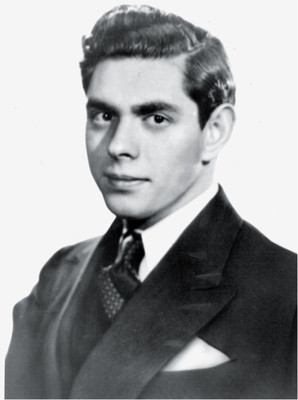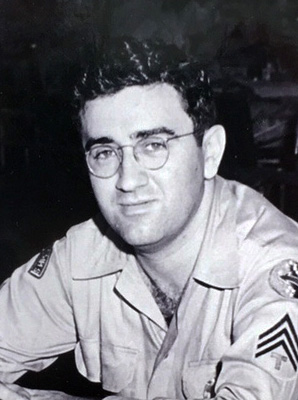
Superman is a superhero who appears in American comic books published by DC Comics. The character was created by writer Jerry Siegel and artist Joe Shuster, and debuted in the comic book Action Comics #1. Superman has been adapted to a number of other media, including radio serials, novels, films, television shows, theater productions, and video games.

Joseph Shuster, professionally known simply as Joe Shuster, was a Canadian-American comic book artist best known for co-creating the DC Comics character Superman, with Jerry Siegel, in Action Comics #1.

Itar-Tass Russian News Agency v. Russian Kurier, Inc., 153 F.3d 82, was a copyright case about the Russian language weekly Russian Kurier in New York City that had copied and published various materials from Russian newspapers and news agency reports of Itar-TASS. The case was ultimately decided by the United States Court of Appeals for the Second Circuit. The decision was widely commented upon and the case is considered a landmark case because the court defined rules applicable in the U.S. on the extent to which the copyright laws of the country of origin or those of the U.S. apply in international disputes over copyright. The court held that to determine whether a claimant actually held the copyright on a work, the laws of the country of origin usually applied, but that to decide whether a copyright infringement had occurred and for possible remedies, the laws of the country where the infringement was claimed applied.
The idea–expression distinction or idea–expression dichotomy is a legal doctrine in the United States that limits the scope of copyright protection by differentiating an idea from the expression or manifestation of that idea.

Superboy is the name of several fictional superheroes appearing in American comicbooks published by DC Comics. These characters have been featured in several eponymous comic series, in addition to Adventure Comics and other series featuring teenage superhero groups.

Jerome Siegel was an American comic book writer. He is the co-creator of Superman, in collaboration with his friend Joe Shuster, published by DC Comics. They also created Doctor Occult, who was later featured in The Books of Magic. Siegel and Shuster were inducted into the comic book industry's Will Eisner Comic Book Hall of Fame in 1992 and the Jack Kirby Hall of Fame in 1993. With Bernard Baily, Siegel also co-created the long-running DC character The Spectre. Siegel created ten of the earliest members of the Legion of Super-Heroes, one of DC's most popular team books, which is set in the 30th Century. Siegel also used pseudonyms including Joe Carter and Jerry S.
Copyright misuse is an equitable defence to copyright infringement in the United States based upon the doctrine of unclean hands. The misuse doctrine provides that the copyright holder engaged in abusive or improper conduct in exploiting or enforcing the copyright will be precluded from enforcing his rights against the infringer. Copyright misuse is often comparable to and draws from the older and more established doctrine of patent misuse, which bars a patentee from obtaining relief for infringement when he extends his patent rights beyond the limited monopoly conferred by the law.
A scène à faire is a scene in a book or film which is almost obligatory for a book or film in that genre. In the U.S. it also refers to a principle in copyright law in which certain elements of a creative work are held to be not protected when they are mandated by or customary to the genre.

In re Aimster Copyright Litigation, 334 F.3d 643, was a case in which the United States Court of Appeals for the Seventh Circuit addressed copyright infringement claims brought against Aimster, concluding that a preliminary injunction against the file-sharing service was appropriate because the copyright owners were likely to prevail on their claims of contributory infringement, and that the services could have non-infringing users was insufficient reason to reverse the district court's decision. The appellate court also noted that the defendant could have limited the quantity of the infringements if it had eliminated an encryption system feature, and if it had monitored the use of its systems. This made it so that the defense did not fall within the safe harbor of 17 U.S.C. § 512(i). and could not be used as an excuse to not know about the infringement. In addition, the court decided that the harm done to the plaintiff was irreparable and outweighed any harm to the defendant created by the injunction.

National Comics Publications v. Fawcett Publications, 191 F.2d 594. was a decision by the United States Court of Appeals for the Second Circuit in a twelve-year legal battle between National Comics and the Fawcett Comics division of Fawcett Publications, concerning Fawcett's Captain Marvel character being an infringement on the copyright of National's Superman comic book character. The litigation is notable as one of the longest-running legal battles in comic book publication history.

Wonder Man is a fictional superhero created by American cartoonist Will Eisner, whose only appearance was in the comic book Wonder Comics #1. The character is of some historical significance due to a lawsuit that resulted from his only appearance.
Feltner v. Columbia Pictures Television, Inc., 523 U.S. 340 (1998), was a case in which the Supreme Court of the United States ruled that if there is to be an award of statutory damages in a copyright infringement case, then the opposing party has the right to demand a jury trial.
Copyright in architecture is an important, but little understood subject in the architectural discipline. Copyright is a legal concept that gives the creator of a work the exclusive right to use that work for a limited time. These rights can be an important mechanism through which architects can protect their designs.

In copyright law, a derivative work is an expressive creation that includes major copyrightable elements of a first, previously created original work. The derivative work becomes a second, separate work independent in form from the first. The transformation, modification or adaptation of the work must be substantial and bear its author's personality sufficiently to be original and thus protected by copyright. Translations, cinematic adaptations and musical arrangements are common types of derivative works.

Ho v. Taflove is a Seventh Circuit case about the copyrightability of scientific data. In 2011, the Seventh Circuit affirmed a 2009 decision of the United States District Court for the Northern District of Illinois holding that the expression of ideas can be copyrighted but not the ideas themselves.
Playboy Enterprises, Inc. v. Starware Publishing Corp. 900 F.Supp. 433 was a case heard before the United States District Court for the Southern District of Florida in May 1995. The case revolved around the subject of copyright infringement and exclusive rights in copyrighted works. Plaintiff Playboy Enterprises filed a motion for partial summary judgment of liability of copyright infringement against defendant Starware Publishing Corporation. Specifically, Playboy Enterprises ("PEI") argued that Starware's distribution of 53 of Playboy's images, taken from an online bulletin board, and then sold on a CD-ROM, infringed upon PEI's copyrights. The case affirmed that it was copyright infringement, granting Playboy Enterprises the partial summary judgment. Most importantly, the case established that "The copyright owner need not prove knowledge or intent on the part of the defendant to establish liability for direct copyright infringement."

Warner Bros. Inc. v. American Broadcasting Companies, Inc., 720 F.2d 231, the case of Superman v. The Greatest American Hero, is the third case in a Second Circuit trilogy of 20th century copyright infringement cases in which the proprietors of Superman copyrights sued other companies for publishing fictional exploits of a cape-wearing superhero. Although the plaintiffs were successful in the first two cases, Superman v. Wonderman and Superman v. Captain Marvel, they were completely unsuccessful in Superman v. The Greatest American Hero. The court held that "as a matter of law. .. 'The Greatest American Hero' is not sufficiently similar to the fictional character Superman, the hero of comic books, television, and more recently films, so that claims of copyright infringement and unfair competition may be dismissed without consideration by a jury."
In the early 1930s, Jerry Siegel and Joe Shuster developed the fictional comic book character of Superman. In 1938, they sold the character to Detective Comics, Inc.. After Superman became an unexpected success, the pair attempted to recover the rights to the character. This began a long chain of legal battles over ownership, royalties, and credit that would continue after their deaths.
Copyright protection is available to the creators of a range of works including literary, musical, dramatic and artistic works. Recognition of fictional characters as works eligible for copyright protection has come about with the understanding that characters can be separated from the original works they were embodied in and acquire a new life by featuring in subsequent works.
DC Comics v. Mark Towle was a copyright case heard in the United States Court of Appeals, Ninth Circuit in September 2015. The case concerned defendant Mark Towle, who built and sold replicas of the Batmobile in his garage named 'Garage Gotham'. DC Comics initially filed a lawsuit, in May 2011, in the federal district court alleging causes of action for copyright infringement, trademark infringement and unfair competition arising out of Mark's manufacture and sale of replicas. The plaintiffs, DC Comics, claimed the infringement of their copyright as the replicas sold by Mark were similar to the ones that appeared in 1966 television show Batman and the 1989 film Batman. The issue discussed by the court was "whether a character in a comic book, television program or motion picture is entitled to copyright protection". The ninth circuit followed the precedents and came up with a three-part test to determine the protection given to such characters.









